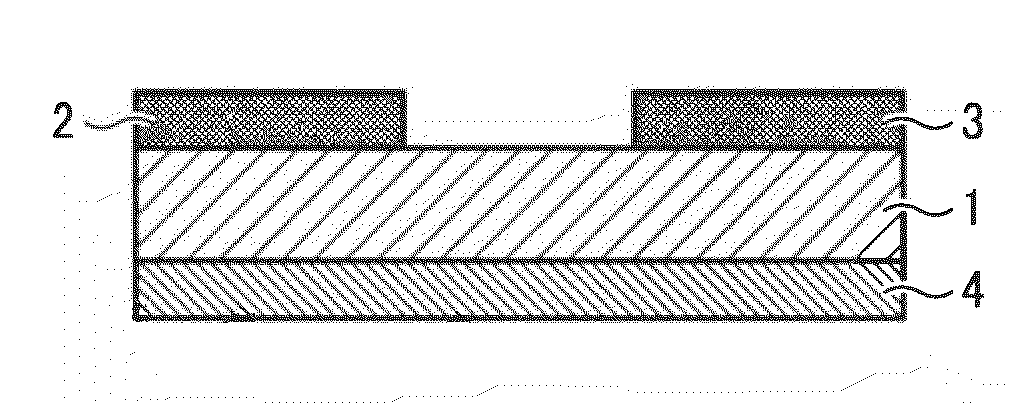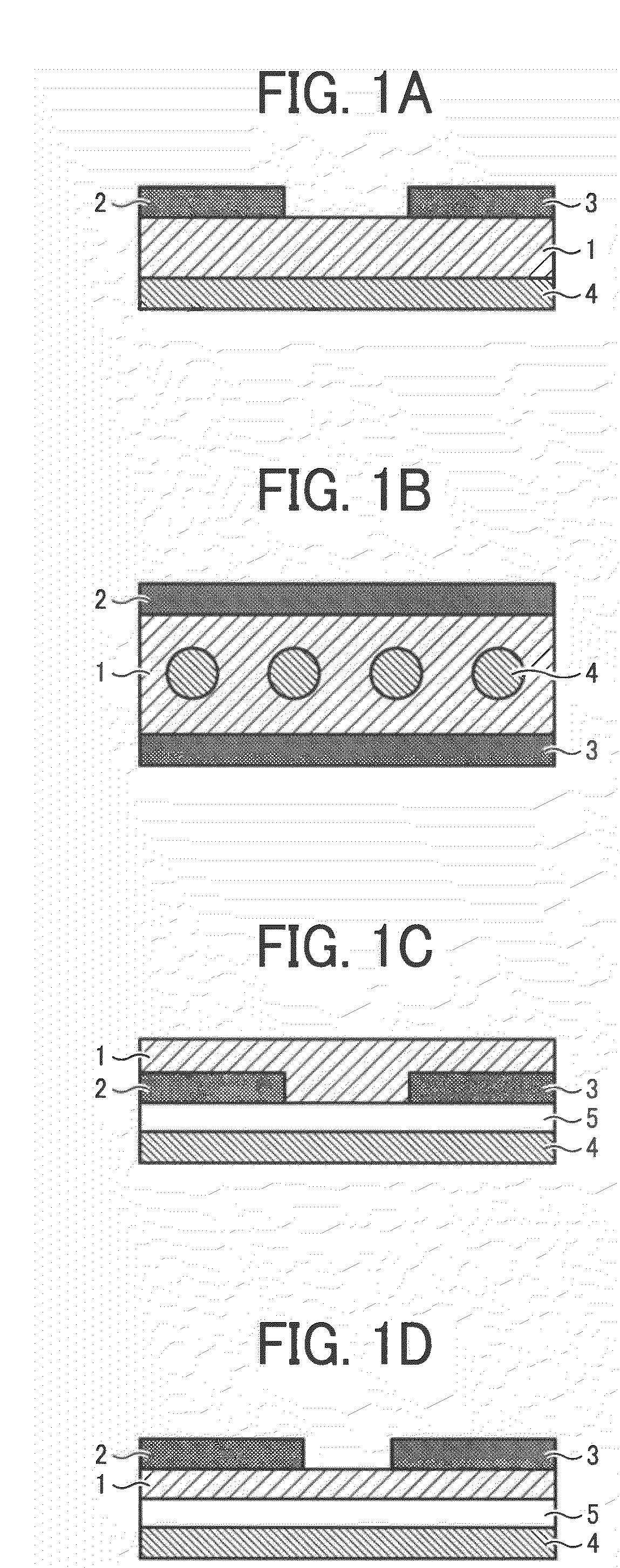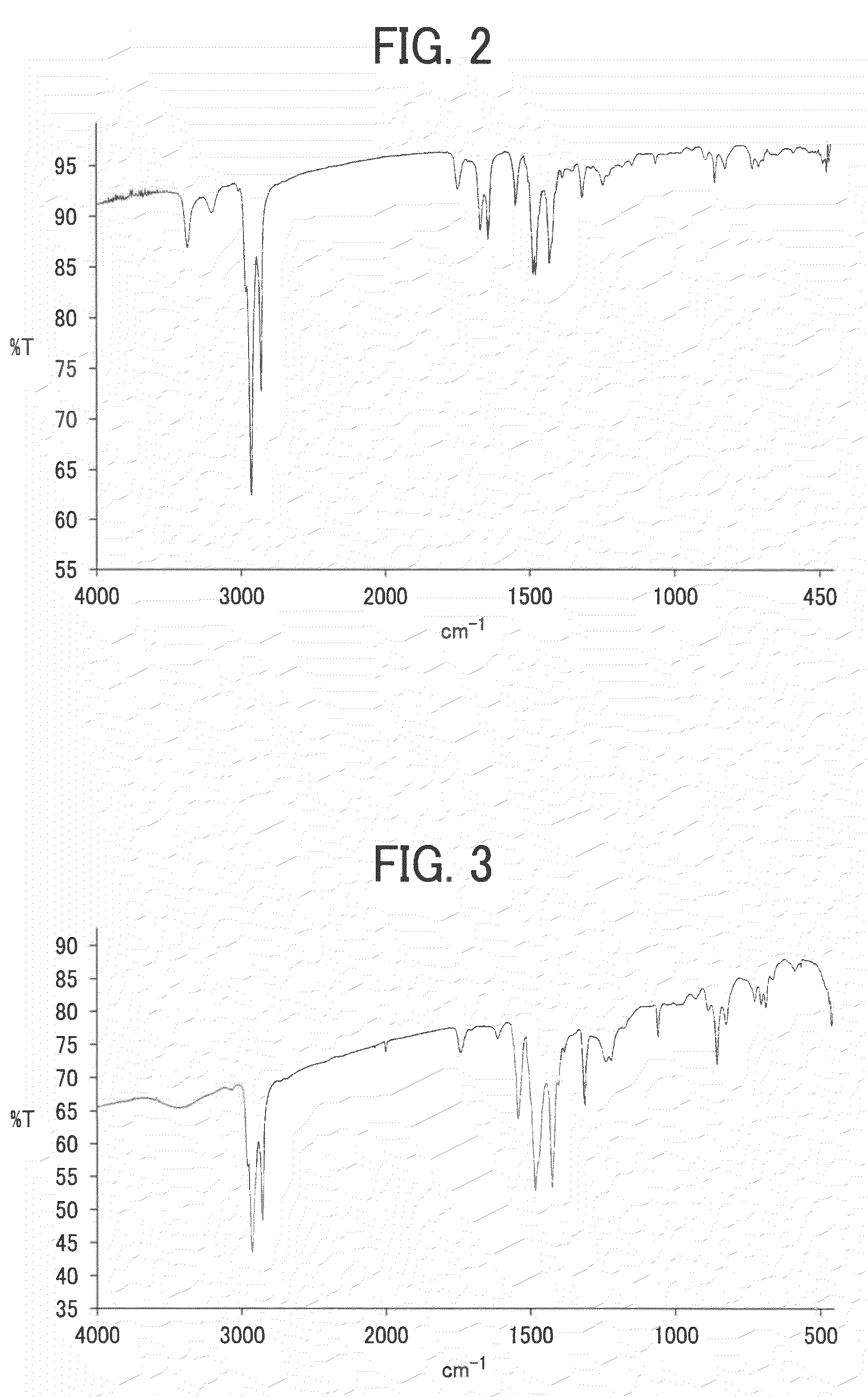Benzobisthiazole compound, benzobisthiazole polymer, organic film including the compound or polymer and transistor including the organic film
a technology of benzobisthiazole and compound, which is applied in the field of benzobisthiazole compound and benzobisthiazole polymer, can solve the problems of poor stability of films prepared by such low molecular weight materials as mentioned above, poor solubility of acene compounds in popular solvents, and poor stability of films prepared by such polymer materials as mentioned abov
- Summary
- Abstract
- Description
- Claims
- Application Information
AI Technical Summary
Problems solved by technology
Method used
Image
Examples
synthesis example 1
[0069]2-Thienobenzo[1,2-d; 4,5-d′]bisthiazole is derived from 2-carboxylthiophene. As illustrated in the below-mentioned reaction formula, it is possible to synthesize the compound using an organic alkali metal such as n-BuLi, followed by adding dry ice thereto. Alternatively, it is possible to use the method using Mg as disclosed in Macromolucules 2007, 40, 6585-6593.
[0070]In order to perform a condensation reaction of 2-carboxylthiophene and 2,5-diamino-1,4-benzenethiol, a method disclosed in Chem. Mater. 2004, 16, 4286-4291, in which an acid chloride is formed by reacting 2-carboxylthiophene with thionyl chloride, and then a polymerization reaction is performed using an Eaton's reagent can be used. Alternatively, a method disclosed in Macromolecules, 1996, 29, 3787-3792, in which a condensation reaction is performed using polyphosphoric acid (PPA) and sulfolane, can also be used. Since the thus prepared 2-thienobenzo[1,2-d; 4,5-d′]bisthiazole derivative is hardly oxidized, the ox...
synthesis example 2
[0071]As disclosed in Macromolecules 2006, 39, 2823-2831, the above-mentioned compounds (i.e., polymers) (1)-3 and (1)-4 can be synthesized by reacting a di-halogen monomer and a bistrimethyl tin compound using the Stille coupling method.
synthesis example 3
[0072]The polymer of the present invention can be prepared using a condensation reaction of a dicarboxylic acid monomer or a dicarboxylic acid chloride monomer with 2,5-diamino-1,4-benzenethiol dihydrochlorides as illustrated in the following reaction formula.
[0073]Alternatively, a method disclosed in Chem. Mater. 2004, 16, 4286-4291, in which dicarboxylic acid intermediate is converted to an acid chloride using thionyl chloride, and then the acid chloride is subjected to a polymerization reaction using an Eaton's reagent, can also be used. In addition, a polymerization method disclosed in Macromolecules, 1996, 29, 3787-3792, which uses polyphosphoric acid (PPA) and sulfolane, can also be used.
[0074]When removing hydrochloric acid from 2,5-diamino-1,4-benzenethiol dihydrochlorides, polyphosphoric acid (PPA) or an Eaton's reagent is used. However, these compounds typically have low solubility in thiophene compounds. Therefore, the polymerization reaction may be performed using a popu...
PUM
| Property | Measurement | Unit |
|---|---|---|
| thickness | aaaaa | aaaaa |
| thickness | aaaaa | aaaaa |
| temperature | aaaaa | aaaaa |
Abstract
Description
Claims
Application Information
 Login to View More
Login to View More - R&D
- Intellectual Property
- Life Sciences
- Materials
- Tech Scout
- Unparalleled Data Quality
- Higher Quality Content
- 60% Fewer Hallucinations
Browse by: Latest US Patents, China's latest patents, Technical Efficacy Thesaurus, Application Domain, Technology Topic, Popular Technical Reports.
© 2025 PatSnap. All rights reserved.Legal|Privacy policy|Modern Slavery Act Transparency Statement|Sitemap|About US| Contact US: help@patsnap.com



